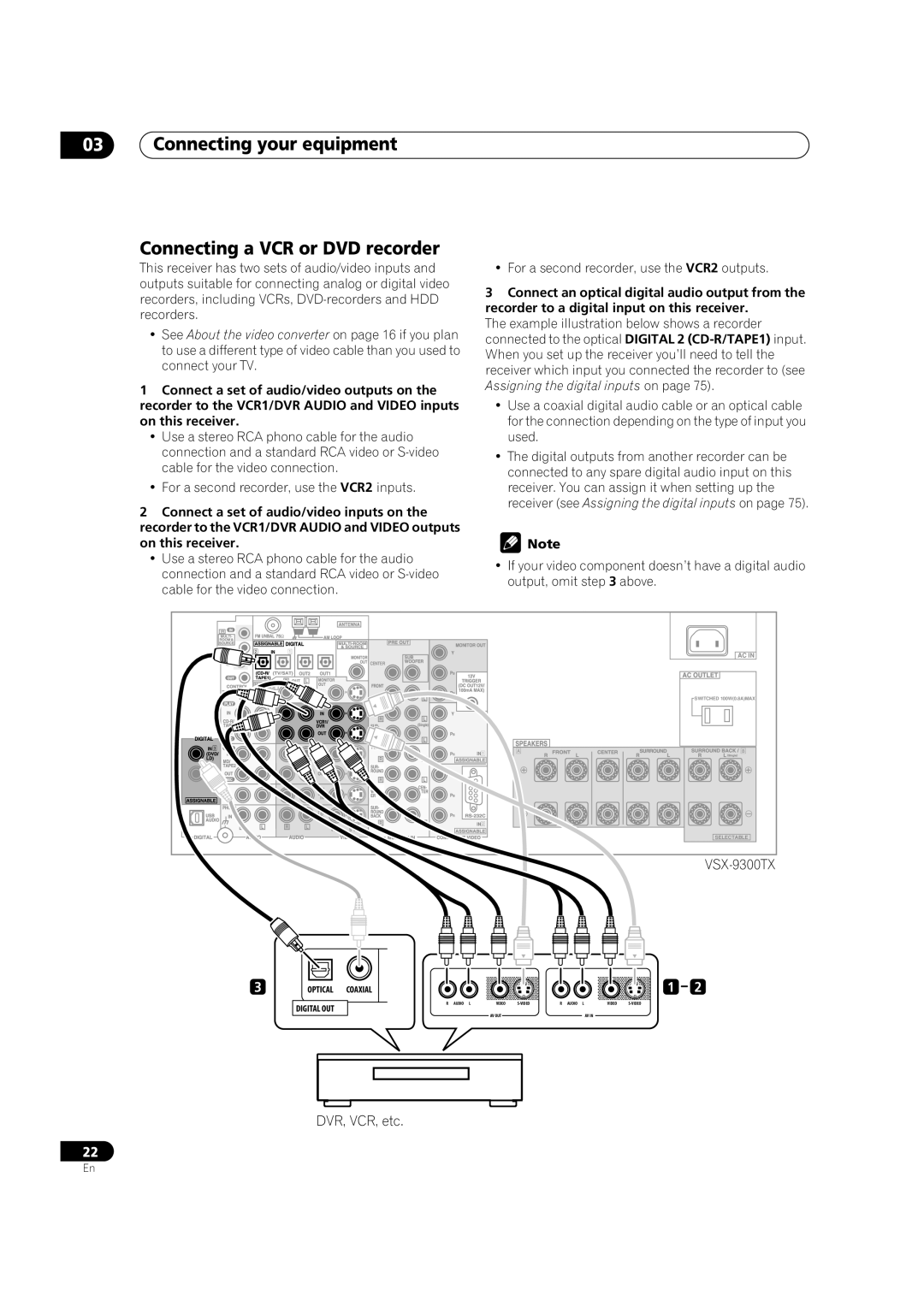
03Connecting your equipment
Connecting a VCR or DVD recorder
This receiver has two sets of audio/video inputs and outputs suitable for connecting analog or digital video recorders, including VCRs,
•See About the video converter on page 16 if you plan to use a different type of video cable than you used to connect your TV.
1Connect a set of audio/video outputs on the
recorder to the VCR1/DVR AUDIO and VIDEO inputs on this receiver.
•Use a stereo RCA phono cable for the audio connection and a standard RCA video or
•For a second recorder, use the VCR2 inputs.
2Connect a set of audio/video inputs on the recorder to the VCR1/DVR AUDIO and VIDEO outputs on this receiver.
•Use a stereo RCA phono cable for the audio connection and a standard RCA video or
• For a second recorder, use the VCR2 outputs.
3Connect an optical digital audio output from the recorder to a digital input on this receiver.
The example illustration below shows a recorder connected to the optical DIGITAL 2
•Use a coaxial digital audio cable or an optical cable for the connection depending on the type of input you used.
•The digital outputs from another recorder can be connected to any spare digital audio input on this receiver. You can assign it when setting up the receiver (see Assigning the digital inputs on page 75).
![]() Note
Note
•If your video component doesn’t have a digital audio output, omit step 3 above.
CENTER |
AC IN
SWITCHED 100W(0.8A)MAX
SELECTABLE
3 OPTICAL COAXIAL
DIGITAL OUT
1 2
R AUDIO L | VIDEO | R AUDIO L | VIDEO | ||
| AV OUT |
|
| AV IN |
|
DVR, VCR, etc.
22
En
